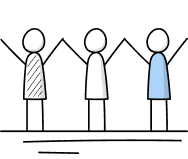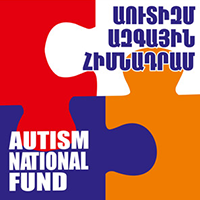of Autism
The early diagnosis of autism is critical for receiving effective intervention. Children with ASD who receive intervention while the brain is most adaptable show the greatest improvement. However, even if a diagnosis is made in adolescence or adulthood, interventions are still helpful due to the brain’s continued plasticity.
Evidence over the last 15 years indicates that intensive early intervention in optimal educational settings for at least 2 years during the preschool year’s results in improved outcomes in most young children with ASD*.
* The American Psychiatric Association’s Diagnostic and Statistical Manual-IV, Text Revision (DSM-IV-TR) 1 provides standardized criteria to help diagnose ASDs.


Impairment of social relationships

Social
communication

Imaginative
thought
1. Qualitative impairment in social interaction, as manifested by at least two of the following:
- marked impairment in the use of multiple nonverbal behaviors such as eye-to-eye gaze, facial expression, body postures, and gestures to regulate social interaction
- failure to develop peer relationships appropriate to developmental level
- a lack of spontaneous seeking to share enjoyment, interests, or achievements with other people (e.g., by a lack of showing, bringing, or pointing out objects of interest)
- lack of social or emotional reciprocity
2. Qualitative impairments in communication as manifested by at least one of the following:
- delay in, or total lack of, the development of spoken language (not accompanied by an attempt to compensate through alternative modes of communication such as gesture or mime)
- in individuals with adequate speech, marked impairment in the ability to initiate or sustain a conversation with others
- stereotyped and repetitive use of language or idiosyncratic language
- lack of varied, spontaneous make-believe play or social imitative play appropriate to developmental level
3. Restricted repetitive and stereotyped patterns of behavior, interests, and activities, as manifested by at least one of the following:
- encompassing preoccupation with one or more stereotyped and restricted patterns of interest that is abnormal either in intensity or focus
- apparently inflexible adherence to specific, nonfunctional routines or rituals
- stereotyped and repetitive motor manners (e.g., hand or finger flapping or twisting, or complex whole-body movements)
- persistent preoccupation with parts of objects

When a child is diagnosed with Autism Spectrum Disorder
When a child is diagnosed with Autism Spectrum Disorder it is unexpected and overwhelming news for families. Once the diagnosis is obtained, many complex questions regarding services will confront families. At ICDC it is our initial goal to make sure any questions that you may have, get the most detailed answers.
In order to understand your child within the context of your family and day-to-day environments, assessments begin with our team’s complete evaluation of your child’s development. These standardized assessments are tailored to your child’s age and functioning level.
After assessments, we provide a complete written report on our findings and consultation during which you’ll have an opportunity to ask questions. Personalized recommendations for your child will be provided.
We offer highly individualized, innovative treatment and services that address each child’s immediate needs. Our professional staff is following the principles of Applied Behavior Analysis (ABA)to help children function independently and maximize their potential.
If you are troubled about your child’s development or want to find treatment services, contact the center for an appointment at +374 10 580 733
